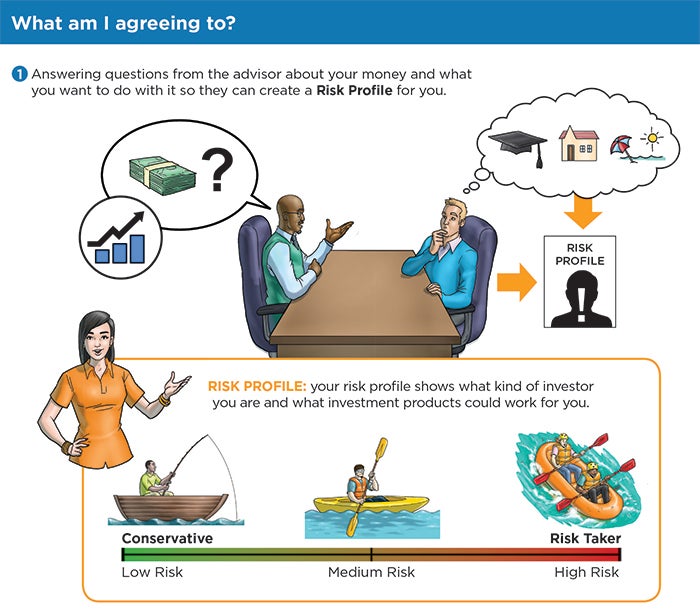Legal contracts often teem with obscure phrases and complicated concepts that people without law degrees struggle to understand. This stands in stark opposition to the growing efforts to make law more accessible. Recently, the use of illustrations in contracts has emerged as a powerful tool for helping lawyers communicate more effectively with diverse populations of varying literacy skills.
Using illustrations in contracts can be a lot of fun. But make no mistake: The onus is on lawyers to bridge the communication gap, and visuals are a vital tool for making it happen.
The legal profession cannot expect everyone else to undertake the long journey necessary to accurately interpret contract legalese on their own. However, lawyers already have unlimited access to images, illustrations, graphs, and other visual representations, and can combine them with varied lettering types, colors, emojis, and symbols to significantly increase a reader’s understanding of the legal concepts in the contracts they sign.
Visual images provide flexibility Visual aids give lawyers more flexibility in how they communicate. You’re able to illustrate an example, amplify a concept, or tap into emotion to clarify an idea because images grab our attention and engage our memories.
Researchers estimate that 80-85 percent of our perception, learning, cognition, and activities are mediated through vision, making imagery an important source of information. Deep inside our medial temporal brain lobe, visual stimuli tap into our emotional response center to inspire an emotional reaction. As a result, people react to images faster and more strongly than words alone, which helps our brains form lasting visual memories.
Lawyers already have — or can develop — the tools to help people build better relationships with law, especially those with low reading comprehension skills. Here’s where to start:
Use the language of readers
Privacy notices are an ideal opportunity to include visuals. GDPR Article 12 requires that privacy notices be presented “in a concise, transparent, intelligible, and easily accessible form, using clear and plain language.”
To fulfill that requirement, you need an intimate understanding of the language of readers. And when you can reach beyond just words, your ability to communicate with those from different backgrounds expands exponentially.
Plaintiffs attorney Cris Feldman of Houston took this sentiment to a new level when he submitted a district court complaint in comic book form. Feldman represents comic book store Third Planet Sci-Fi and Fantasy Superstore in litigation and said of the illustrated complaint, “I am speaking the same language, which is graphic illustration, of some events that need more attention.”
The comic book complaint works as a shared dialogue using images that help readers build more poignant understandings of points plaintiffs believe are relevant. Seeing is believing, Plaintiffs would hope.
However, the two-way aspect of communication works only when all the parties agree on what the visuals represent. The strategies below will help ensure you’re speaking the same language as readers in privacy notices and contracts.
What concepts will you portray visually?
First, you must decide what concepts to portray visually. What is the background and literacy level of potential readers? Don’t assume that higher education levels automatically translate into higher comprehension levels when reading legal contracts.
Lawyers earn millions of dollars every year to duke out the meaning of specific contract language. Using more visuals throughout a contract helps clarify the meaning of the written text, which everyone can benefit from.
Consider who will be reading the notice or the contract and ask:
- Why are they interacting with this company?
- What do they hope to achieve from the interaction?
- What are the relevant rights and duties of each party?
These are the high-level concepts to focus on first. Next, collaborating with a design specialist will help you determine which images serve to portray those concepts.
3 strategies for using visual aids in contracts
The visual below is taken from a contract for financial services created by Creative Contracts. We can use it to illustrate the following three strategies for using visual aids in contracts.

Courtesy of Creative Contracts (Pty) Ltd
1. Use images that portray real objects, people, or places.
Consider where readers live, work, and play. Illustrations should portray relevant settings with recognizable people performing the expected actions. The example below shows the individuals in traditional advisor/advisee roles. (Another example of an employment contract shows a worker picking fruit from a tree.)
2. Connect unfamiliar concepts to familiar ideas.
Images that people can relate to will form connections faster, such as the graduation cap, the house, or the beach scene in the thought bubble, representing common retirement goals. Seeing familiar images not only increases comprehension but also evokes emotion to help crystallize the concept.
3. Use metaphorical representations to simplify abstract concepts.
The financial risk profile is metaphorically represented by a range of boating experiences. It starts with calm and safe waters, to adventurous kayaking, to highly risky whitewater rafting.
This one image communicates three critical concepts that parties must understand to make smart decisions about a legal relationship. Improving reader comprehension is not a passing phase. As global connections increase, digital communications are becoming more visual, making visual intelligence a vital skill for lawyers to develop today.




